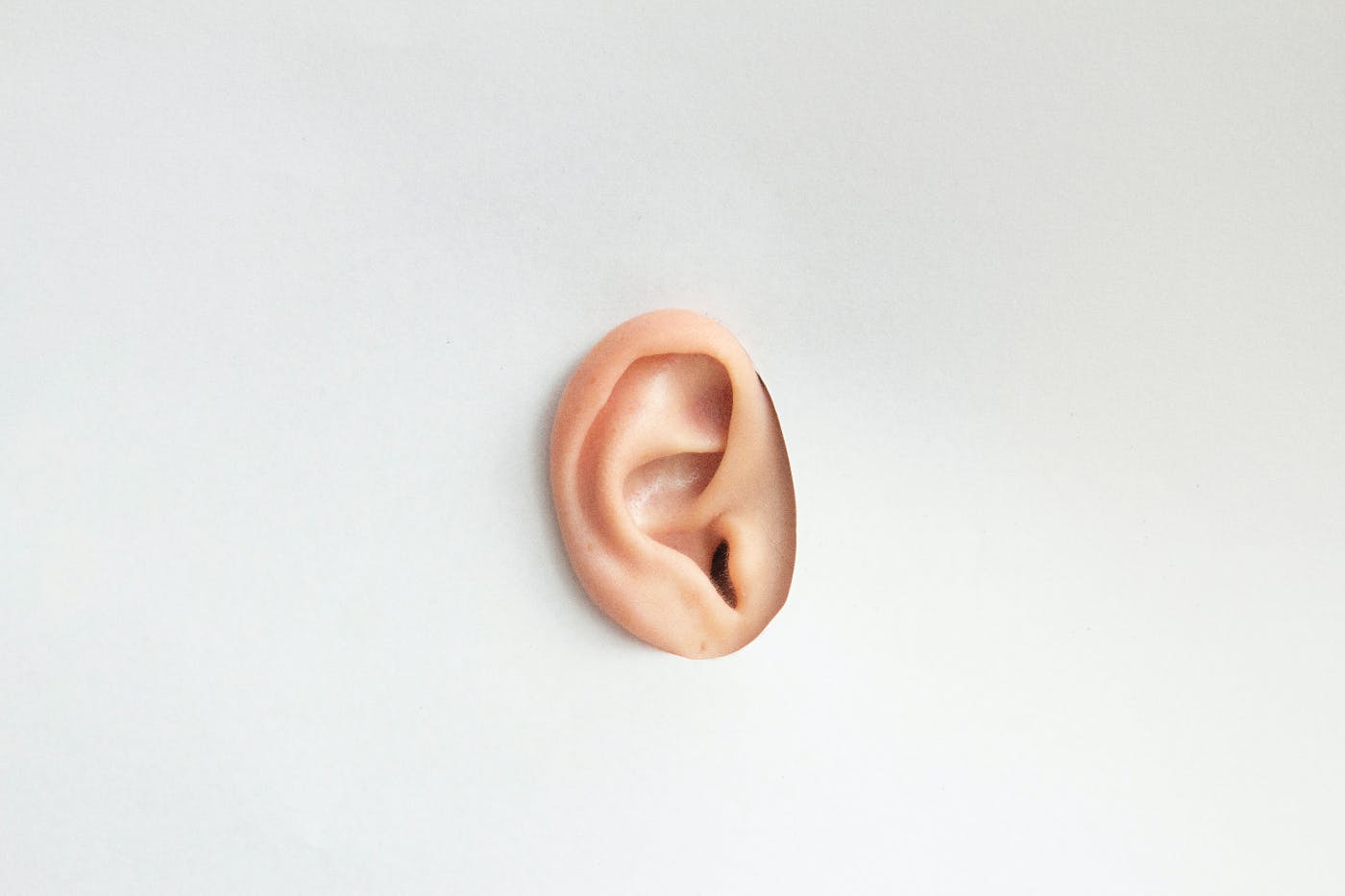
From time to time, a copywriter, especially those working at agencies, is called upon to write video, audio, or commercial scripts.
From time to time, a copywriter, especially those working at agencies, is called upon to write video, audio, or commercial scripts. If you can write scripts, your value in the agency rises. It can be a bit daunting if you’ve never written dialogue before. If you have written dialogue before, but it didn’t land, maybe you can use this article to brush up on your skills.
One of the best tools to help you achieve believable and active dialogue is practicing active listening in your daily life.
There’s more to it, and we will discuss ways to write better dialogue but first, a bit of a disclaimer.
You can Google how to write dialogue, watch videos, and take master classes; all that is great. You can print this article and hang it on your wall; that’s fine too. But, the key to this exercise is knowing there are no hard and fast rules. Writing, especially dialogue, has a lot to do with feel, rhythm, and your ear. Because of that, I am not going to talk about formatting or structure; you can get a good writing program that basically does that for you. Two that I recommend are Writer Duet and Final Draft. There are more out there; shop around. Writing programs are like golf clubs; the number one program might not feel good to you, so find one that does.
These apps will help with formatting, but they will not, nor should you want them to, write dialogue for you. That’s all yours.
One of the first steps you need to take is to read scripts. Read them, don’t just watch the movie; read the scripts. Here’s why, reading a script will give you a better idea of what the actor has to do. Are you helping that actor by writing strong, active, conflict and tension-filled dialogue? It helps to see how the written page translates into a film. You may notice that actors take liberties or make “improvements” to the written word. That’s a lesson to learn.
Five Elements of Good Dialogue

If you read a scene from a screenplay or watch a scene in a film repeatedly, you’ll notice that good dialogue develops over the course of a scene. Good dialogue holds you, gives you information, advances the story, and shows character. But we’re jumping ahead; let’s look at the five elements that will make your dialogue better.
Should be essential to the story
In a screenplay, dialogue is essential to the story as it does one of three things:
- Advances the plot
- Reveals something about character
- Reflect the theme
All three can happen, but one element will rise to the surface and be more prominent than the other two. In an action film, dialogue is sparse. In the newest John Wick movie, Keane Reeves speaks only 380 words, and that’s in a three-hour film. You ask, how can so few words make an impact? Well, the Gettysburg Address was only 272 words long so. It’s not the number of words; it’s using them to the best impact. In a movie like John Wick, character is shown through action; dialogue just moves the plot. The dialogue used in this case is essential to move the plot along.
Should Impart Information
Unlike a novel, you cannot write pages setting up scenes and writing characters' inner thoughts. Dialogue is used to give the audience information.
Dialogue can impart information about one character, how that character views others, how they view themselves, and much more. And you must write it in a way that doesn’t sound too obvious. We’ll touch on this later.
Contains Conflict and Tension
Hitchcock once famously said, “What is drama but life with the dull bits cut out.” Every piece of dialogue has to have conflict and tension.
Now, the level of tension in a scene will vary. You cannot write an entire script where every scene carries the same amount of tension and conflict; that would be too much. You need to build, release, build, and release. But there is a level of tension and conflict in every scene, or else, why put it on the screen?
Don’t mistake naturalistic acting to mean nothing is going on. There is always something going on under the surface. As Hitch said, it’s life, but the dull parts are not in the story.
It’s Tight
Basically, don’t bloat your dialogue, don’t over-write it, Make your points, move the plot, shine a light on a character, and then get going. Too much dialogue will slow your pace, and the audience will get ahead of you, meaning they will see the story unfold way before you want them to.
Even when putting Shakespeare on the screen, you cannot use the entire script. Hamlet, when played at full length, runs about five hours. Sadly, that’s too long for most audiences.
Keep it tight, and then you’ll earn the moments when you want a character to speak longer. But you have to earn that.
There is Subtext
There is subtext, a lot of subtext. What is left unsaid is just as important as what is spoken. What’s below the surface are story, character, and theme. Eventually, through dialogue, you can let those peak through and move the whole Magilla along.
All of this is important, and they help you avoid breaking the one golden rule of writing, never be boring.
Why Active Listening

One of the most important things to remember when writing dialogue is that every character needs to sound unique. You must keep your characters distinct when they are speaking. They can use some of the same words; people from a specific region should sound alike and yet still remain individual.
One of the best ways I know to get nice, distinct voices is to listen to people talk. Sit in a coffee shop and listen to the people around you. Yup, eavesdrop on people and listen to the way they speak. Then change it up. Go to a deli, or listen before your yoga class. Be a fly on the wall as often as possible and listen to people talk.
Don’t judge; that’s vital. You should allow yourself to fall in love with the way people talk. If you start to judge that person sounds stupid or pretentious, you’re putting distance between yourself and the dialogue. During this time, when you’re just listening, do that; just be present and listen. Later, when you’re creating characters, then you can add color, who’s pretentious, who’s a little slow, and the like. But, in the gathering stage, just listen.
Listen to rhythm and pace, listen to word choice and inflection. Listen for repeated phrases and terms. Listen for status. All this is necessary to make your dialogue sound like people talking.
Sounding Authentic
When you’ve started paying attention to how people speak, you’ll notice that relationships can easily be expressed in dialogue. We all have a language between us. Family has a language; lovers have a language; co-workers have a language. We gain and lose language when we meet some new, or someone leaves our lives.
When setting up relationships through dialogue, remember that most people have a shorthand. The best example of this is from the film Broadcast News. Albert Brooks and Holly Hunter, their characters, are on the phone, and she is angry that he quit his job without telling her. She demands that he meet her so they can talk.
There are different ways to show relationship here, but one of them is not to over-write. A poor piece of dialogue is going to try to put too much in the moment, and you might get something like,
“Okay, I’ll meet you; let’s go to that little restaurant with the blue awnings on 4th and Lex; we went there that time after your cousin’s wedding, and we were both so drunk we started singing in the place, and everyone got mad at us, but we didn’t care …”
No one speaks that way. You’re working too hard and treating your audience like they’re idiots. But the actual dialogue at that moment is brilliantly tight, yet it gives you all the information you need. Hunter’s character says now you have to meet me and Brook’s character says,
“Okay, I’ll meet you at the place by the thing where we went that time.”
That’s it. She knows what he meant; we know they are so close and have so much experience between them that they only need that shorthand. The location or the color of the awning nor the whole wedding story isn’t important. What is important is relationship, and that short, tight piece of dialogue beautifully highlights it.
It’s also how people talk. If your characters have a history, they don’t need to repeat that history fully to communicate. They need their shorthand; their shared knowledge tells you how long they’ve known each other and how close they are. Tight and not overwritten.
When you listen to people talking, you’ll start picking up their shorthand and notice all that’s not spoken. You have to learn to listen to people to know how to write the way people talk.
The Bottom Line is to Listen

Hunter Thompson used to type out full books that others wrote to get the feeling of the words and understand the writer and the whys and hows. That’s a lot of work, but it’s not a bad idea. Take a piece of dialogue from and film, and type it out. How does it feel? Do you pick up the pace of the scene? Do you feel how relationships are introduced and furthered? How something feels when you write is a good indication of how well the dialogue works.
Stream a movie, but just listen to the dialogue, don’t watch. Do you understand relationships, status, wants, goals, and character from just listening? If it’s a well-written movie, then your answer will be yes. The dialogue will give you big pieces of the story, and the visuals will support that. You have to find a nice harmony between what your characters say and what you see. One cannot overshadow the other or sound and feel out of place. They are mutually supportive.
John Wick speaks 380 words. If he spoke more, it would slow the film down and be out of character. The visuals and the action carry these types of movies, and dialogue becomes a means to an end, a way of moving the plot, moving to the next piece of action so that it makes sense.
This is a reality for copywriters working on scripts. Usually, you have limited time to tell the story, and you have to include the product and product information. So, writing good dialogue in that situation is all about what you don’t write, what you leave out. This means you must keep things tight, informative, and not boring.
You’ll get it in time, but start by training yourself to listen to people talking. Listen to a wide variety of people, young, old, familiar, and strangers. Eventually, you’ll come across most situations you’ll write about, so listen and retain. The more you listen, the better dialogue you’ll write.

